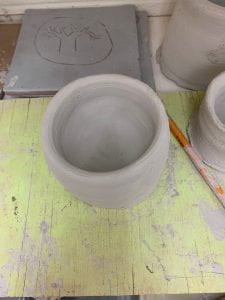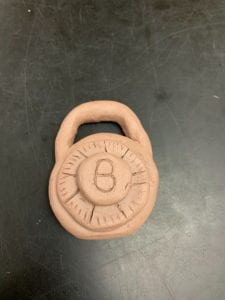


When I started the wheel I expected to do a lot worse than just making things with regular clay. In the beginning I had a lot of fun with it but I couldn’t keep the speed under control and couldn’t handle the clay. I asked Olivia for help and she told me about her technique, I was able to make the clay more centered and secured when I used her advice. As I continued I was more able to center it but not able to make a cylinder. Making the shape of it and making it taller was very difficult for me because I could not seem to make the walls even and strong they would break. After a couple days of trying and failing I asked Ms A for help and she showed me that I should rest my elbows on my knees and have complete control over the clay. I was able to use her technique when making it taller as well. I used one finger to lift and the other inside, I did very well with this. Immediately after she gave me advice I made a successful cylinder. I didn’t make as many as I wanted too because I seemed to forget the technique when the weekend came but when I got back to school I started to be able to do that and I wanted to make my teapot on the wheel but decided not too.


 Planning
Planning





 Artists develop art making skills
Artists develop art making skills




















 Artists organize and develop artistic Ideas
Artists organize and develop artistic Ideas